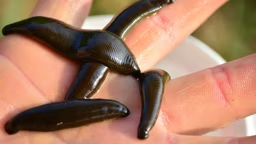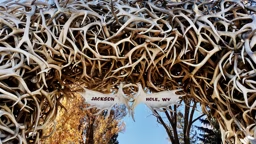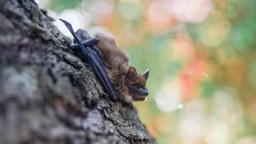We have snowblowers and ergonomically correct snow shovels. We have high-tech fabrics and four-wheel drive. But what we don’t have is something the American black bear has: the ability to hibernate.
When winter has gotten the best of us, and the lazy days of summertime porch-sitting seem like a childhood memory, we can’t just nod off and sleep through the winter.
Hibernation, or an inactive state in which an animal’s bodily functions slow down, may look like an enviable nap, but it’s actually an important mechanism used by animals for conserving energy and surviving through the winter when food is scarce.
When winter has gotten the best of us, and the lazy days of summertime porch-sitting seem like a childhood memory, we can’t just nod off and sleep through the winter.
Hibernation, or an inactive state in which an animal’s bodily functions slow down, may look like an enviable nap, but it’s actually an important mechanism used by animals for conserving energy and surviving through the winter when food is scarce.
Truly zonked. Members of almost every type of mammal species hibernate, but not all animals hibernate in the same way. “True” hibernators make teenage boys on Saturday morning look like light sleepers: They are truly zonked!
True hibernation is characterized by a dramatic drop in heart rate, a decrease in oxygen consumption to about 2 percent of normal, and a drop in body temperature to near freezing levels.
Woodchucks, for example, are true hibernators. During hibernation, their heart rate drops from about 80 beats per minute to about 4 or 5, and their body temperature drops by about 60 degrees Fahrenheit. Although woodchucks awaken every few weeks to nibble on food or to eliminate waste, their incisors, which normally grow at a rapid rate, simply stop growing during the winter.
Other examples of true hibernators are some bats, marmots, ground squirrels and many other rodents.
True hibernation is characterized by a dramatic drop in heart rate, a decrease in oxygen consumption to about 2 percent of normal, and a drop in body temperature to near freezing levels.
Woodchucks, for example, are true hibernators. During hibernation, their heart rate drops from about 80 beats per minute to about 4 or 5, and their body temperature drops by about 60 degrees Fahrenheit. Although woodchucks awaken every few weeks to nibble on food or to eliminate waste, their incisors, which normally grow at a rapid rate, simply stop growing during the winter.
Other examples of true hibernators are some bats, marmots, ground squirrels and many other rodents.
Light sleepers. Other mammals – like skunks, raccoons, opossums and many kinds of bears – are “light sleepers” who take long winter naps. These animals slow down by breathing more slowly and lowering their body temperature a few degrees. Some may wake up to forage between winter snows (as anyone who has had the misfortune of stumbling onto a sleepy skunk in the early spring knows all too well).
One of the most fascinating of light sleepers is the American black bear. Talk about sustainable living! It can doze for as long as 100 days without eating, drinking, urinating or defecating. In preparation for winter, it builds up a fat layer several inches thick. Then, while snoozing through the cold, fat tissue breaks down to supply water and up to 4,000 calories per day. A human inactive for such a long period of time would be a physical wreck, but not black bears. They have the ability to reprocess calcium back into their bones during hibernation, thereby avoiding degenerative bone loss typically associated with long periods of inactivity.
One of the most fascinating of light sleepers is the American black bear. Talk about sustainable living! It can doze for as long as 100 days without eating, drinking, urinating or defecating. In preparation for winter, it builds up a fat layer several inches thick. Then, while snoozing through the cold, fat tissue breaks down to supply water and up to 4,000 calories per day. A human inactive for such a long period of time would be a physical wreck, but not black bears. They have the ability to reprocess calcium back into their bones during hibernation, thereby avoiding degenerative bone loss typically associated with long periods of inactivity.
Ice cold nap. For cold-blooded hibernators such as frogs, snakes and turtles, winter is a very serious matter. Their body temperature rises and falls with the temperature of their environment. To protect themselves from the cold, they either hide or hibernate. Water-dwelling animals hide deep beneath the ice, and those that live on land burrow under the soil.
Wood frogs, for example, hibernate under leaf litter, rotting logs, rocks and moss. When it becomes truly cold, wood frogs have the amazing ability to freeze solid. Ice crystals form beneath their skin and throughout the body’s skeletal muscles; as much as 35 to 45 percent of the frog’s body may freeze and turn to ice. In their frozen state, breathing, bloodflow and heartbeat cease as specialized proteins and glucose act as a form of antifreeze. As they thaw out, their heart starts beating, they start gulping air, they shake out their limbs and soon the former ice cube hops away.
Wood frogs, for example, hibernate under leaf litter, rotting logs, rocks and moss. When it becomes truly cold, wood frogs have the amazing ability to freeze solid. Ice crystals form beneath their skin and throughout the body’s skeletal muscles; as much as 35 to 45 percent of the frog’s body may freeze and turn to ice. In their frozen state, breathing, bloodflow and heartbeat cease as specialized proteins and glucose act as a form of antifreeze. As they thaw out, their heart starts beating, they start gulping air, they shake out their limbs and soon the former ice cube hops away.
How do hibernating animals perform these remarkable feats? In December 2000, a scientist at the University of Marburg in Germany discovered two “hibernation genes” that regulate how the body uses and conserves its energy. These genes direct enzymes to burn fat stores rather than carbohydrates, allowing the animal’s body to slow down and winter over.
Other than vindicating low-carb diet fans, what we are learning from our four-legged friends has many potential applications for humans. And hibernation, without long-term bodily harm and bone loss, may ultimately be the key to equipping humans for long-distance space travel.
When the days get shorter and the air turns chilly, some animals head for warmer climates, others bundle up with a thicker coat of fur, and many settle in for a long winter’s nap. On your next walk, if the woods seem lovely, dark and deep, they probably are – many hidden animals are curled up all around you sleeping the winter away.
With a doctorate in animal behavior, Nancy Cain knows when animals are sleeping, and she knows when they’re awake. (But they can’t be bad or good, because they’re animals, for goodness sake!)
Other than vindicating low-carb diet fans, what we are learning from our four-legged friends has many potential applications for humans. And hibernation, without long-term bodily harm and bone loss, may ultimately be the key to equipping humans for long-distance space travel.
When the days get shorter and the air turns chilly, some animals head for warmer climates, others bundle up with a thicker coat of fur, and many settle in for a long winter’s nap. On your next walk, if the woods seem lovely, dark and deep, they probably are – many hidden animals are curled up all around you sleeping the winter away.
With a doctorate in animal behavior, Nancy Cain knows when animals are sleeping, and she knows when they’re awake. (But they can’t be bad or good, because they’re animals, for goodness sake!)












